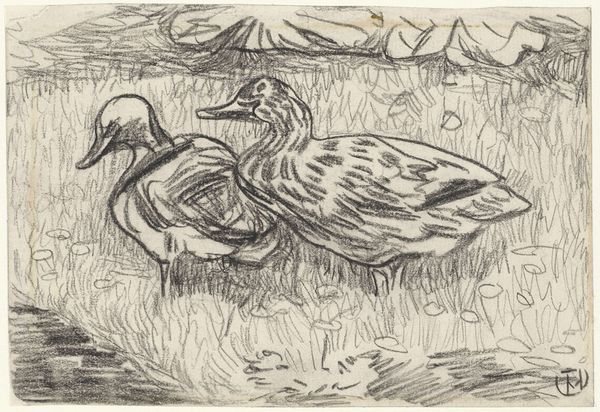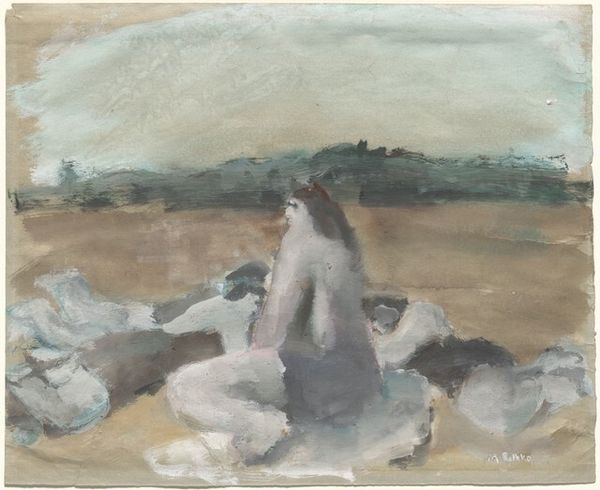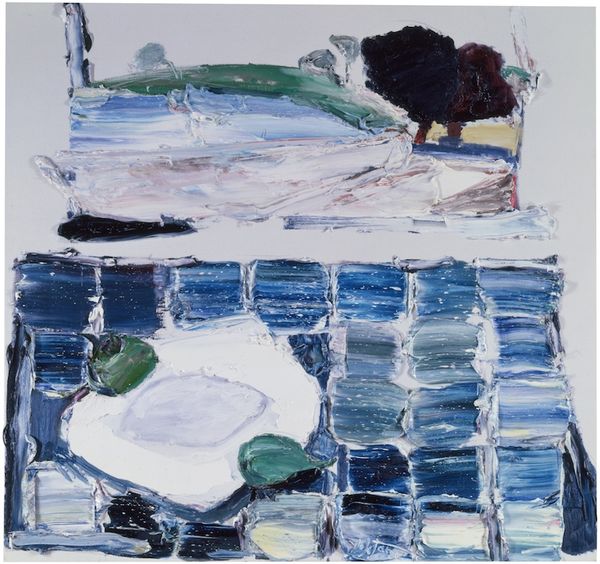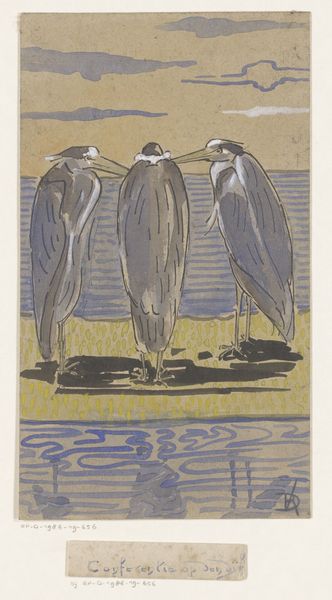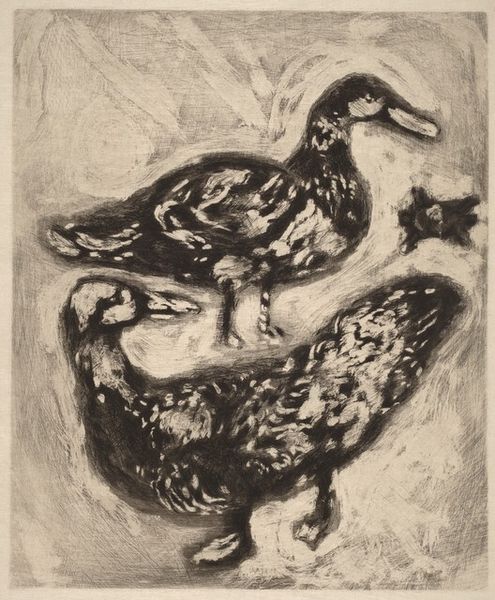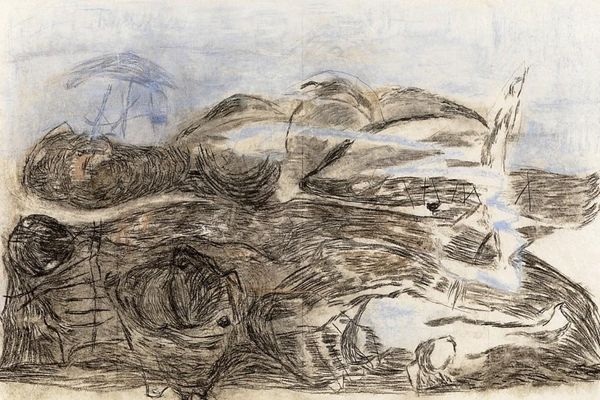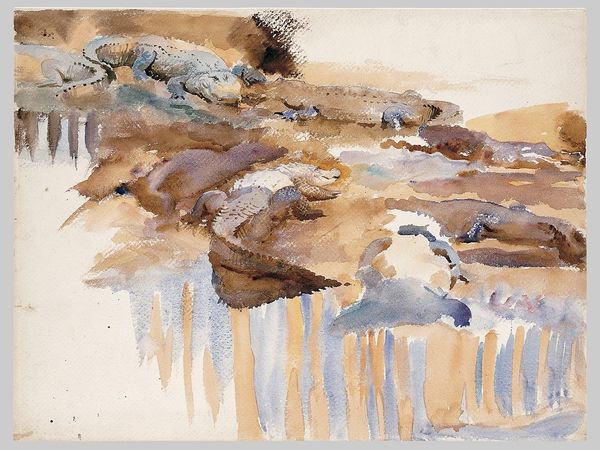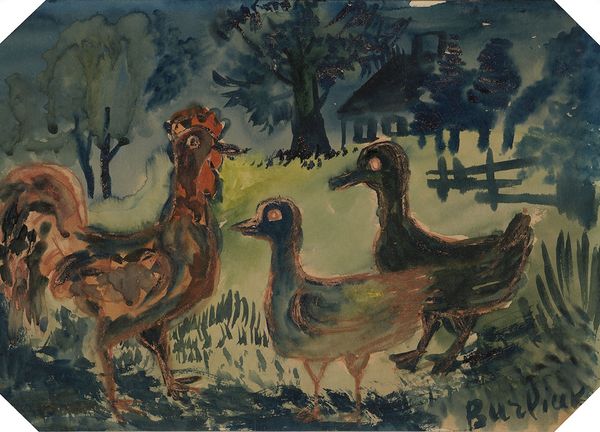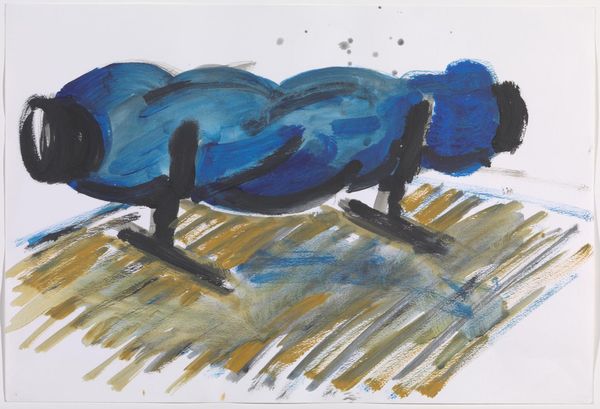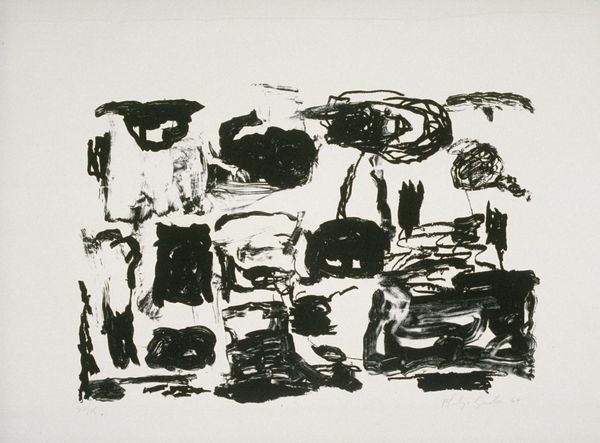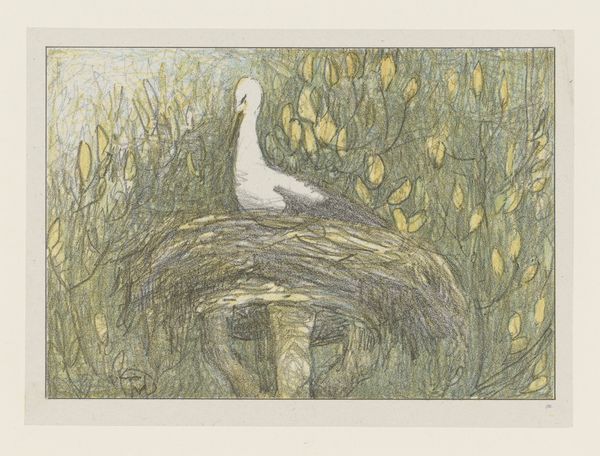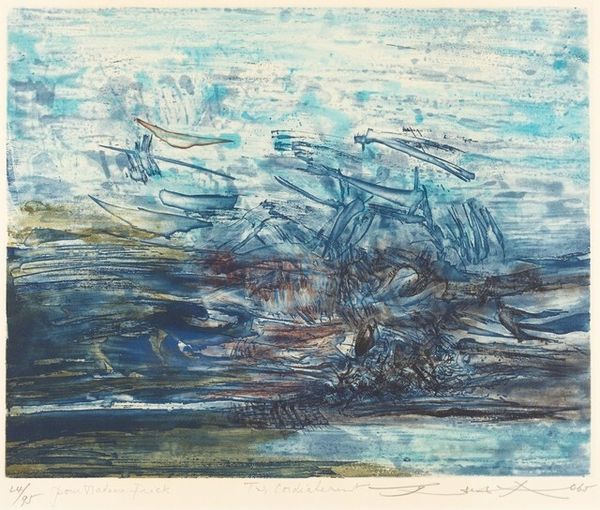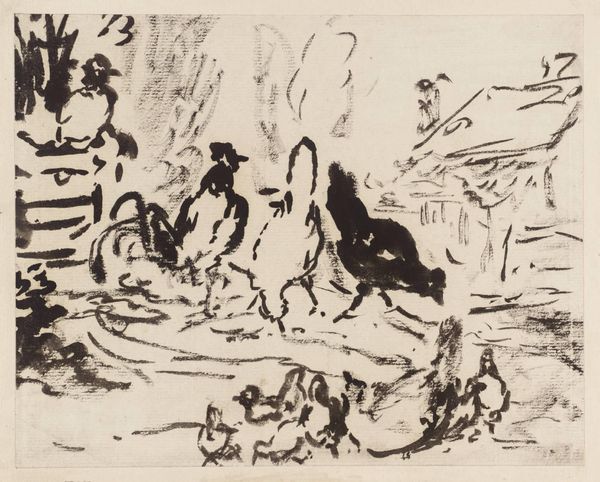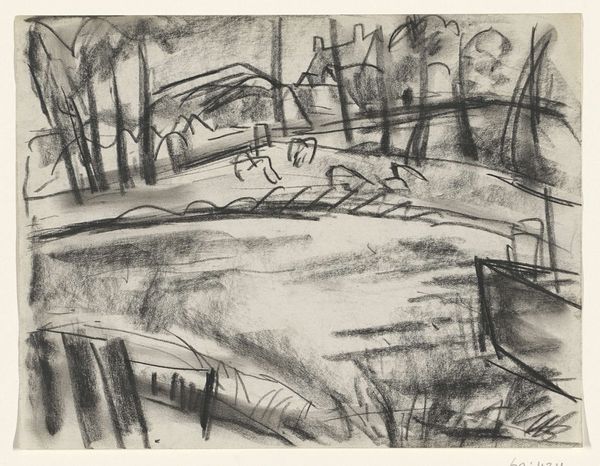
# print
#
landscape
#
figuration
Copyright: National Gallery of Art: CC0 1.0
Curator: This is "Sea Bird," a print created by Max Kahn in 1959. What's catching your eye? Editor: Well, immediately, it's the texture and stark simplicity of it. It feels very grounded in the material process; the roughness of the printing almost overwhelms the quietness of the scene. Curator: The symbolic weight of the bird, in that context, is interesting, isn’t it? In many cultures, birds represent freedom, the soul, transcendence…especially against this almost primordial seascape. Editor: Yes, but consider the materiality itself. A print – this is inherently a reproduced image. Does that mass production complicate our understanding of ‘aura,’ given how much cultural meaning we’re ascribing? Curator: The print medium could actually democratize the image, making its inherent symbolism accessible. Also, Kahn wasn’t just making any print; he used lithography. Lithographs capture the artist’s touch in a way other printmaking methods don’t, using stone as its base medium. Editor: I’m more intrigued by how the medium communicates a specific moment of production. You can see, for instance, where he built up the different shades, the layered effect it creates and the registration where blocks overlapped. The sea bird emerges from process as much as any symbolic representation. Curator: Looking closer, the bird is centrally placed between two looming, jagged forms. Visually, it is in a tenuous balance. But a sea bird in nature would be well-equipped to face even such an apparently chaotic seascape, it evokes something inherent and resilient. Editor: The entire scene is comprised of rough textures, except for the smoothly delineated form of the sea bird; it really accentuates how still it is positioned, juxtaposed within what might seem as a rough landscape. It seems to create the visual space of stillness as the locus point of material instability. Curator: It feels as though Kahn asks us to locate the symbolic and tangible in a world shaped both by primordial material processes and the hand of the artist. Editor: Absolutely; and by looking so intently at the process of its making, it really underscores how art is itself labor; how art both reifies and obfuscates what it produces.
Comments
No comments
Be the first to comment and join the conversation on the ultimate creative platform.
